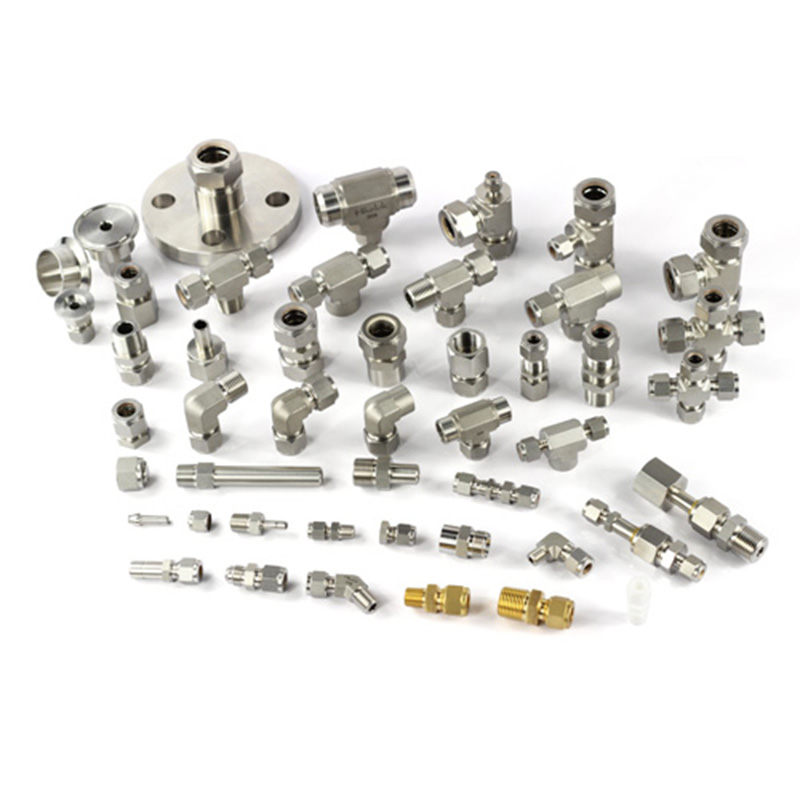The Benefits of Stainless Steel Instrument Fittings in Corrosive Environments
Corps

Stainless steel is renowned for its strength, durability, and resistance to corrosion, which makes it an ideal material for use in demanding environments. In industries like chemical processing, oil and gas, marine, and pharmaceuticals, where corrosive elements are prevalent, stainless steel instrument fittings offer several advantages. These benefits are crucial for maintaining operational efficiency, reducing downtime, and ensuring safety.
Corrosion Resistance: The Key Advantage
The primary benefit of using stainless steel instrument fittings in corrosive environments is its exceptional corrosion resistance. Stainless steel contains chromium, which forms a passive oxide layer on the surface, protecting it from corrosive substances. This oxide layer is self-healing, meaning if it is scratched, it will naturally regenerate, providing continued protection. This makes stainless steel a reliable choice for industries where fittings are exposed to harsh chemicals, extreme temperatures, and humidity.
Enhanced Durability and Longevity
Stainless steel’s ability to resist corrosion extends its lifespan, even in aggressive environments. Unlike other metals that may degrade over time when exposed to moisture, salt, or acidic substances, stainless steel maintains its structural integrity for longer periods. This durability helps businesses save on replacement costs and reduce the frequency of maintenance checks. In industries that require highly precise instrumentation, such as laboratory settings or refineries, the longevity of stainless steel instrument fittings ensures that operations run smoothly without frequent disruptions caused by equipment failure.
Improved Safety and Reliability
Instrument fittings are critical components in maintaining the safety and reliability of industrial systems. Stainless steel’s strength ensures that these fittings can withstand high pressures and extreme temperatures without risk of failure. In corrosive environments, where other materials might weaken or crack, stainless steel remains strong, reducing the likelihood of leaks or accidents. This enhanced safety is particularly important in industries like oil and gas, where leaks of hazardous substances could lead to catastrophic consequences. Stainless steel fittings help ensure that systems operate securely, even under challenging conditions.
Low Maintenance Requirements
Stainless steel instrument fittings require minimal maintenance due to their resistance to corrosion and wear. Unlike other materials, which may need frequent cleaning or replacements, stainless steel’s resilience means that regular upkeep is usually limited to simple inspections and occasional cleaning. This not only reduces maintenance costs but also lowers the risk of contamination or malfunction, which can occur when fittings degrade. The ability of stainless steel to remain functional without constant attention makes it an attractive option for industries where downtime is costly and performance is critical.
Versatility in Different Applications
Stainless steel is highly versatile and can be used in a wide variety of applications within corrosive environments. Whether it’s in piping systems, instrumentation, or valves, stainless steel fittings are suitable for almost any situation where durability and corrosion resistance are needed. There are different grades of stainless steel available, such as 304, 316, and 310, each offering specific benefits depending on the corrosive conditions present. For example, 316 stainless steel is highly resistant to chloride corrosion, making it ideal for marine environments. This versatility ensures that businesses can choose the most appropriate material for their specific needs, optimizing performance and cost-efficiency.
Conclusion: A Superior Choice for Corrosive Environments
Stainless steel instrument fittings offer numerous benefits in corrosive environments, from superior corrosion resistance to enhanced safety, durability, and low maintenance. By providing a reliable and long-lasting solution to corrosion-related challenges, stainless steel ensures the continuous and safe operation of industrial systems.
Its versatility, coupled with environmental and economic advantages, makes it an excellent choice for a wide range of industries. As industries continue to evolve and demand higher performance in challenging conditions, stainless steel will undoubtedly remain the material of choice for instrument fittings in corrosive environments.











commentaires